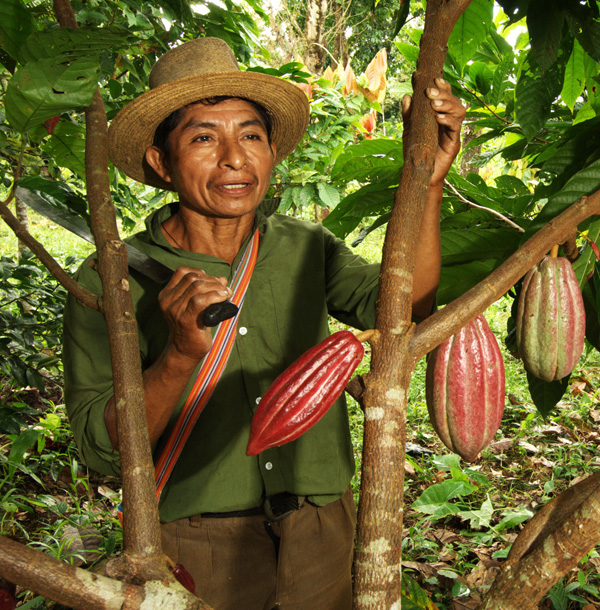Cultivating Cacao in Belize
In many ways, traditional Mayan culture in southern Belize seems little changed from generations ago. In Crique Sarco, one of several thatched-hut Mayan villages I visited in 1997, families sleep in hammocks, prepare tortillas over wood fires, and bathe in the river. As subsistence farmers, they grow beans, rice, and corn, and raise chickens and a few pigs.















Southern Belize is also the heart of the world’s first commercial cacao production. Shade-grown cacao planted at the edge of healthy forests benefits from a wealth of nearby pollinators and natural pesticides. A couple of millennia ago, the Maya learned how to remove the bean’s bitterness and astringency by fermenting the sweet pulp surrounding the bean. Today, the cultivation of organic cacao near the rainforest provides Mayan farmers enough cash to remain in their traditional communities. Shade-grown cacao also gives indigenous communities an incentive to protect the sensitive local environment from illegal logging and oil exploration.
One of the first companies to encourage organic cacao production in Belize was Green & Black’s, which in 1993 launched “Mayan Gold,” the word’s first Fair Trade chocolate bar. The chocolate was sourced from around two hundred Mayan farmers in communities like Crique Sarco. Working through the local Toledo Cacao Growers Association (TCGA), Green & Black’s sought to increase production by purchasing all the cacao the TCGA farmers grew and offering a premium above Fair Trade prices. The program ran well until 2008, when an outbreak of monilia pod rot decimated the trees. The harvest began to recover only in 2012.

To document Belizean cacao production, I journeyed upstream from Crique Sarco by dugout canoe. After disembarking, we walked three miles along a dirt road before turning into the forest. There, deep within, we encountered a sweaty farmer clearing weeds around a few cacao saplings. A fresh machete gash in his leg underscored how dangerous his work is. The farmer proudly led us to some mature shade-grown trees bearing trophy cacao pods—his first marketable harvest from seeds he had hand-planted four years earlier.
Today, nearly 1,200 farmers belong to TCGA. And because global demand for Belizean shade-grown cacao is increasing, the farmers’ future—at least for now—looks bright.
Todd Shapera ’79 photographed in Belize for the EcoLogic Development Fund. For more photos, see ToddShapera.com.
